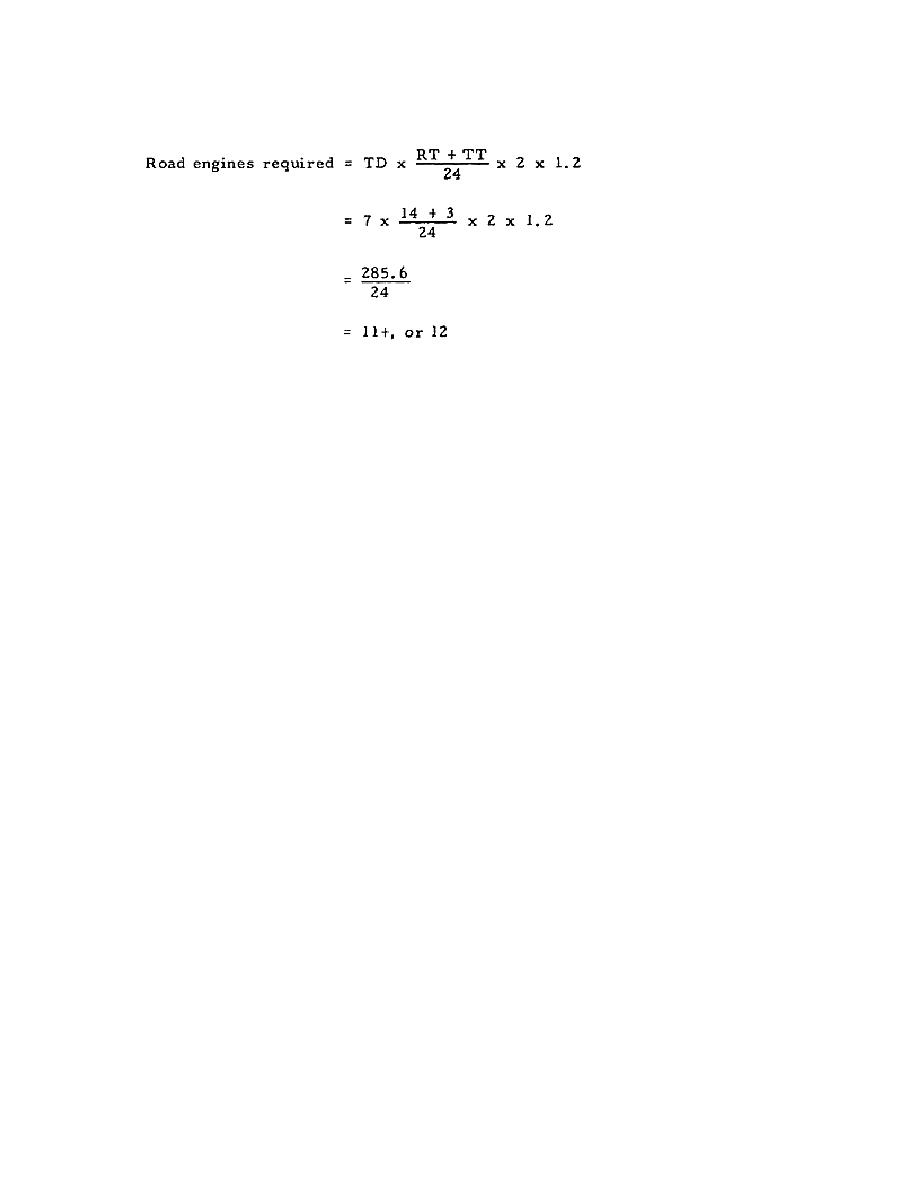
in the formula for TT is, therefore, 3. The computation for road
engines is made as follows:
Following the same procedure for the other two divisions, you find
that the first division requires 21 road engines and the third
division 20. By totaling the requirements of the three divisions,
you get the number of road engines needed to operate the railroad.
12 + 21 + 20 = 53
3.8. SWITCH ENGINES
The third and final category of railway equipment that must be
planned for is switch engines. They are used in yards to move
railway cars that are received, classified, and reassembled for
departure. No two yards are the same size or have the same type and
scope of operation; however, the functions of the main yards on any
railroad are essentially the same.
The number of switch engines required at a terminal is based on
the number of cars received at, dispatched from, or passing through
it per day. When the number of cars has been computed, that number
should be applied to table VII to compute the number of switch
engines required at each terminal. For example, in the explanation
of how to determine rolling stock requirements in paragraph 3.5, 220
cars pass through each division terminal each day (110 forward and
110 return traffic), not counting the 10 percent or 242 cars in the
reserve. However, you do not include the reserve when calculating
the number of switch engines needed. Table VII shows that you need
one switch engine for every 100 cars passing through a division
terminal each day; therefore in the example, you need 3 switch engines
220 + 100 =2+, or 3
40



 Previous Page
Previous Page
